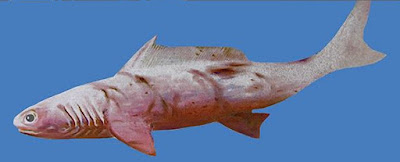It was though that the evolution of sharks was known. However, a 380 million year old fossil found in the Kimberley region of Western Australia indicates the presence of bone as well as cartilage. In other words a virtual missing link has been found.
It means that an ancestor was a bony fish. Obviously, they lost the bone, lightening the body, to enable them to swim faster. The theory of a lineage containing only cartilaged ancestors has now been dropped. This is an indication of accepted beliefs about life in general being without foundation.
Animals with only cartilage were thought to be more primitive than boned ones. Accepted for centuries, this concept was incorrect all along. Be careful what you believe. This could be extended to the religious sphere. You could be following a false faith.
✴ Evolution by Ty Buchanan ✴








